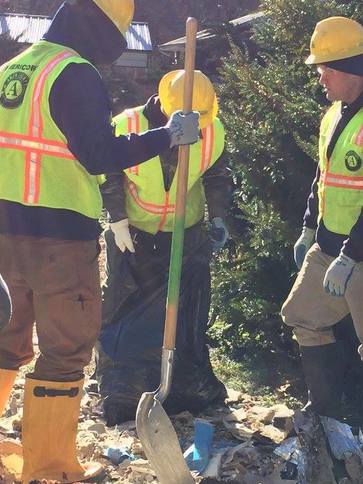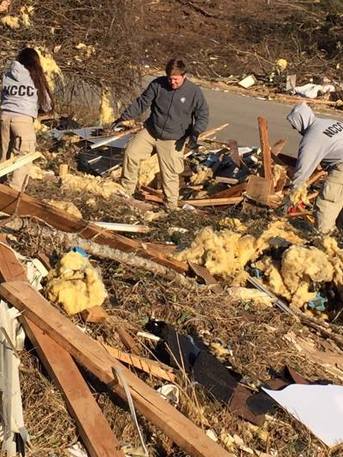|
Event
Summary: Beginning on December 22, 2015,
Missouri experienced a tremendous flooding event that affected much of the
state. AmeriCorps Disaster Response
Teams (A-DRTs), led by AmeriCorps St. Louis Emergency Response Team have been
in the area since the beginning of the flood, first with flood fighting and now
with helping residents and communities begin the process of recovery. The President declared a Major Disaster
Declaration for Missouri on January 21, 2016.
National Service
Response:
-
AmeriCorps St. Louis has led the volunteer effort and is coordinating with Don Stamper
of the State Service Commission, Federal and CNCS DSU Officials using an
intricate incident command system.
- Over 100 A-DRT members are on the ground in Missouri and in just
over two weeks have:
- Mucked/gutted 65 homes
- Completed 57 damage assessments
- Removed over 5,840 sandbags
- Managing over 1,160 work orders
-
Provided minor repairs to 48 homes
- Supporting 4
Volunteer Reception Centers
Additional Resources:
Missouri Disaster Declaration
AmeriCorps
St. Louis Facebook

Wendy Spencer, CNCS CEO and Kelly DeGraff, Senior Advisor for Disaster
Services visited with local and state officials on January 12. This visit included stops in affected
neighborhoods in Fenton and Arnold, Missouri.
One family talked with the group about AmeriCorps sandbagging efforts
that saved their home from flooding. In
addition to sandbagging efforts, AmeriCorps teams provided debris removal
assistance after the tremendous flooding.
After visiting AmeriCorps members in Waynesville, Missouri for a
roundtable discussion about the early response to the storm – the group visited
the AmeriCorps Disaster Response Team Operations Center in Eureka. The trip concluded with visits to the
Multi-Agency Resource Center (MARC) in Pacific, Missouri and at the United Way
of Greater St. Louis. Throughout the
state – local, state and federal leadership were able to view the efforts of
the over 80 members of the AmeriCorps A-DRTs deployed to Missouri.

Event
Summary: On December 23, a tornado swept
through Northern Mississippi wreaking destruction and loss throughout its path.
Residents were left cleaning up the
storms damage throughout the holiday season.
AmeriCorps National Civilian Community Corps (NCCC) teams from the
Southwest Region (Denver, Colo.) responded to requests of assistance. The President declared a Major Disaster for
Mississippi on January 4, 2016.
National Service
Response:
- AmeriCorps NCCC Team provided services to residents in Mississippi
for over a week after the storm.
- Team Water 10 assisted residents by removing over 3,500 pounds of
debris and material from residences throughout northern Mississippi
- They provided support for donations management with two local
churches, assisting survivors with much needed resources.
Additional Resources:
Mississippi Disaster Declaration
AmeriCorps
NCCC Southwest Region Facebook

|